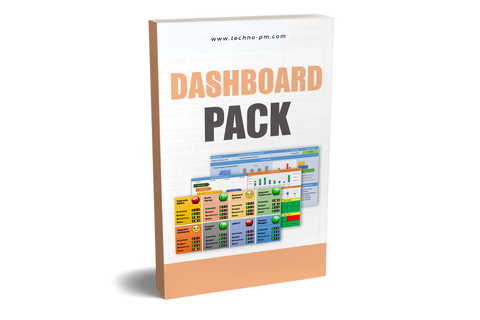Project Control Dashboard
Project Control Dashboard
Project control is a systematic process that allows project managers to see how their project is doing and take necessary corrective action. It involves tracking progress, status, risks, and issues, documenting changes, and feeding that information into the planning process. Project control must be exercised throughout the project's life to be effective.

Project control entails Initiating, Planning, Executing, Controlling, and Closing a project to ensure that it is completed within the allotted time frame, budget, and specifications. In order to effectively manage a project, it is important to have a firm understanding of what controls are necessary and how they should be put into place.
Project Control Processes and Tasks
- Define what is meant by “on time, within budget, and to the agreed-upon specifications.”
- Identify early warning signs that could indicate a problem with meeting these objectives.
- Put in place corrective actions to address any identified problems.
- Tracking actual progress against planned progress
- Adjusting plans as necessary to stay on track
- Assessing the impact of changes to the project plan
- Monitoring budget and spending
- Identifying and addressing risks and issues
- Reporting on project status
- Reporting on project status

Why Does Your Team Need Project Control?
Project control is a process of monitoring and managing the progress of a project to ensure that it meets the requirements specified by the customer or client. It involves tracking specific milestones and objectives and assessing whether resources are being allocated effectively to meet deadlines. Project control aims to minimize cost overruns and ensure that stakeholders are satisfied with the result. While it may not be glamorous, effective project control is essential for successful project delivery.
Several techniques can be used to achieve effective project control. One common approach is to establish specific milestones and objectives at the outset of the project and then track these milestones regularly. This allows stakeholders to see how the project progresses and makes it easier to identify any potential problems or issues. Another useful technique is to regularly assess whether resources are being allocated effectively. By monitoring the use of time, money, and other resources, it is possible to detect any areas where improvements can be made.
Finally, effective communication is essential for good project control. Keeping stakeholders informed of progress and setbacks makes it possible to maintain a positive relationship with them and ensure that they remain engaged in the project.
Factors:
Factors – Risk
Risks can be broadly classified as either:
1. Project risks that are specific to the project and which could impact its successful completion.
2. Enterprise risks: risks that are outside the project but could still affect it (e.g., economic recession)
Project managers need to be aware of both types of risk and have plans to deal with them. It is important to understand and measure project risks accurately to manage them. This can be done through risk identification, assessment, and mitigation.
- Project risks are specific to the project and could impact its successful completion.
- Enterprise risks are outside the project but could still affect it, e.g., the economic recession.
- Risk identification: involves identifying potential risks, both known and unknown.
- Risk assessment: involves assessing the likelihood and impact of each risk if it were to occur.
- Risk mitigation: involves putting in place steps to reduce the likelihood or impact of any identified risks.
Factor – Cost
The project control factor is the estimated cost of a project at any given time, usually expressed as a percentage of the total estimated cost. The factor cost is determined by dividing the project's estimated cost by the current estimate of the number of completed work units. This gives you a per-unit estimate of the cost to complete the project. The project control factor then tells you how much this number has changed since your last calculation. By tracking the project control factor, you can quickly identify when costs are spiking and take action to correct the problem.
Project Control Factor = Estimated Cost of Project ÷ Estimated Number of Completed Work Units.
Factor – Deadline
Deadlines are an important part of controlling projects. They help keep everyone on track and ensure that the project is completed on time. However, it's important to remember that deadlines are only estimates and may not be possible to meet every time. When setting a deadline, be sure to allow for some leeway so that you can still meet your goal even if things don't go exactly as planned.
Benefits of Project Control :
Project Control is a system that enables an enterprise to track, manage, and report on the progress of individual projects and portfolios of projects. Project control aims to ensure that all projects are completed within the approved budget, schedule, and scope.
Some benefits of project control include:
- Improved decision-making: Accurate and timely information helps managers make better decisions about which projects to pursue and how best to allocate resources.
- Greater efficiency: Project Control systems improve communication and coordination among team members, leading to more efficient and effective project execution.
- Better organizational visibility: By tracking the progress of individual projects and portfolios, executives can better understand how their organization is performing.
- More accurate forecasts: Project Control systems help track actual progress against originally planned progress, resulting in more accurate forecasts for future project outcomes.



